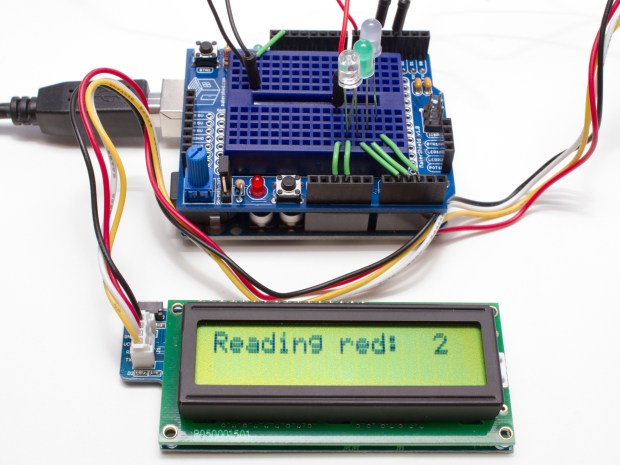Did you know that, although they’re great for emitting light, LEDs are also capable of absorbing light? This idea is leveraged in the fantastic Maker Press book, Atmospheric Monitoring with Arduino, which goes into depth on using a variety of LEDs to detect light in the atmosphere. With a few simple components, you can build a device that’s capable of detecting sunrises, sunsets, and even haze and water vapor levels in the atmosphere.
All parts needed for this build are included in the LED Atmospheric Analyzer Kit, except an Arduino, USB Cable and jumper wires.
This project is pulled directly from the Atmospheric Monitoring with Arduino book, and begins on Page 51.










